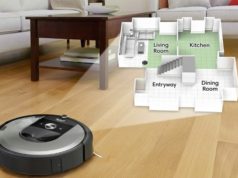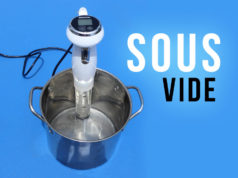Door contact sensors give your smart home a way to check when a door (or window) is opened. They are small electrical devices that attach to openings in your home, such as a door, and detect when they have been opened. They are used in both smart home alarm systems and also general smart home automation.

What do contact sensors actually do?
A WiFi door contact is comprised of two pieces:
- A reed switch
- The magnet
When they are together, the reed switch is closed. When they are moved apart, the reed switch opens and an event can be triggered. In the case of smart automation, you could set the kitchen lights to come on when you open the door. Or execute multiple tasks, such as boiling the kettle.
The reed switch is placed on the frame and the smaller magnet section is placed on the door, or window.
How are door contact sensors powered?
One of the downsides to all this wonderful smart wireless tech is that, while we get rid of all the wires, the individual components do require batteries. Contact sensors are no different and they’ll generally be powered with a small lithium battery.
The lifespan of these batteries depends on how often they are used. Some general averages are:
- 5 years standby time
- 1 Year – 15 uses per day
- 2 Years – 7 times per day
So while you won’t need to be changing batteries every week, it is a responsibility you’ll have to keep on top of. Thankfully, this task is made slightly easier by the level indicator you’ll get on your smart phone (depending on the manufacturer).
WiFi Door sensors for smart alarms
When it comes to smart alarms, you can place a contact sensor on the doors to trigger the alarm, and alerts to your phone, when the door is opened. You can also use a contact sensor to just check if a door or window is open, without manually going there and checking yourself.
Are they reliable?
The way the reed switch and the magnet works is a very reliable way to tell when a window has been opened. Signals are then sent to the alarm system and further action can be taken.
Smart Contact Sensor
Contact sensors aren’t exactly new…
The technology itself isn’t especially new; these kinds of 2-part sensors have been used in home alarms going back many years. A lot of people will remember homes with door sensors, with wires running all over the place.
One of the good things about Wifi sensors is they use your Internet connection rather than having to run wires up to each sensor and then to the alarm box.
To screw, or not to screw…
Depending on which alarm kit you buy, or which Wifi contact sensor you buy, you might not have to break out the screw-driver, or drill at all. There are some alarms, like the Somfy home protect alarm, which don’t require anything to be screwed into your door.
While it’s not a huge undertaking to attach a contact sensor, it’s not something everyone wants to do. In those cases, the ‘non-screw’ version provides a door-friendly alternative.
You can Amazon Alexa Home Alarms in our guide here.
Sources & References
- If you want to dive deep, there’s a good guide on how the humble reed switch works here.







